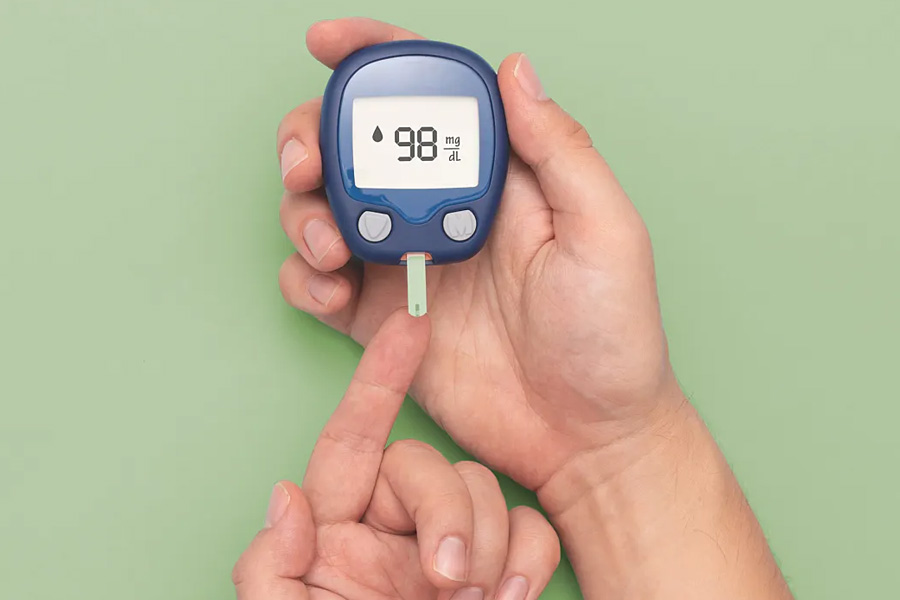
Why Diabetes Testing Is So Important
Diabetes continues to be among the Philippines’ top health concerns. Filipinos often learn they have the disease only after complications have developed, like tiredness, impaired wound healing, or blurred vision. That’s why routine diabetes tests are important to prevention and early intervention. By proper testing, physicians can identify early warning signs, track glucose levels, and encourage patients to make lifestyle modifications prior to disease advancement.
Common Types of Diabetes Tests
Physicians in the country perform a number of diabetes test in the Philippines that have a particular diagnostic function:
1. Fasting Blood Sugar (FBS) Test
This test takes your blood glucose after fasting for a minimum of eight hours. It is among the easiest and most routine tests to ascertain your blood sugar level. Your FBS should be less than 100 mg/dL under normal conditions. Prediabetes is 100 to 125 mg/dL, and 126 mg/dL or more could indicate diabetes.
2. HbA1c (Glycated Hemoglobin) Test
The HbA1c test offers a three-month average of blood glucose levels. It is not a fasting test and can be done in the convenience of your own home. Any level less than 5.7% is normal, 5.7–6.4% signifies prediabetes, and 6.5% and above is typical for diabetes.
3. Oral Glucose Tolerance Test (OGTT)
This test measures your body’s response to sugar. After fasting overnight, you’ll drink a glucose solution, and your blood will be tested multiple times over two to three hours. OGTT is particularly useful for diagnosing gestational diabetes among pregnant women.
4. Random Blood Sugar Test
This test is possible at any time, no matter when you last ate. It’s usually used for the first tests in clinics or for emergencies where you need to get an answer right away.
When You Should Get Tested
Filipinos who are 40 years and above, or are overweight, have a history of diabetes in their families, or have symptoms like too much thirst or frequent urination, should get tested at least once a year. Younger Filipinos with risk factors—such as being physically inactive or having high blood pressure—ought to get screened more frequently as well.
Average Costs of Diabetes Tests in the Philippines
The cost of a diabetes test in the Philippines will depend on the nature of the test and where you go.
- FBS Test: ₱150–₱300
- HbA1c Test: ₱500–₱1,200
- OGTT: ₱700–₱1,500
- Random Blood Sugar Test: ₱150–₱250
There may be cheaper or even free testing done at public hospitals and community health clinics, though, with private diagnostic centers offering speed and more extensive analysis.
Interpreting Your Test Results
Knowing your results is important to moving forward and maintaining your health. If your test shows you have high glucose levels, your physician may order additional testing or diet and lifestyle changes.
- Normal results indicate your blood sugar is under good control.
- Borderline or prediabetic results indicate you should change your diet and exercise.
- High readings need medical attention and ongoing monitoring.
Your doctor will be able to clarify the figures and what they imply for your individual case.
Where to Get Tested
Nowadays, having a **diabetes test in the Philippines** is more accessible than ever. A lot of hospitals and diagnostic centers have walk-in testing services, while online health platforms such as NowServing allow patients to book appointments more conveniently. These platforms connect patients with accredited clinics and laboratories nationwide, allowing Filipinos to save time and ensure credible service.
Preparing for a Diabetes Test
For fasting tests, do not eat or drink anything other than water for eight to twelve hours prior to your appointment. Dress comfortably and take valid identification and referral from your doctor if necessary. Effective preparation ensures reliable and meaningful results.
Living Proactively with Knowledge
Understanding your blood glucose levels puts you in control of your health. Testing regularly, with a healthy diet, exercise, and medical advice, can forestall diabetes or control it successfully. Whether for an initial screening or ongoing tracking, easy access to diabetes tests in the Philippines means every Filipino can take control of a better future.
